By Anastasia Roberts
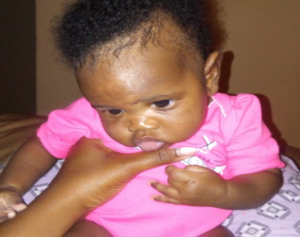 Life is such a beautiful anomaly. Three months ago I was blessed and honored to give birth to a little baby girl named Analee. She took my world and flipped it into a disarray…in the best way possible. After giving birth to Analee, I began to think a little more critically about the precious gift we call life.
Life is such a beautiful anomaly. Three months ago I was blessed and honored to give birth to a little baby girl named Analee. She took my world and flipped it into a disarray…in the best way possible. After giving birth to Analee, I began to think a little more critically about the precious gift we call life.
For me, at one end of a spectrum life is a beautiful new born child and the other end an individual encountering death and contemplating afterlife. There are also all of the complexities, examinations, and enjoyment life has to offer in between. Along with engaging in the excitement of a new life, recently I have felt the sadness from the modern day strange fruit embedded in our nation of violent death.
The past few weeks, we have dealt with life ending through violence, anger, hate. These deaths make me question how life escapes us suddenly and why? Again, I began to evaluate life and this time I think about how I want to teach my daughter the value of a person’s life. This is somewhat of a cathartic process for me and hopefully will benefit my daughter in the long run.
As a Christian, I believe we have life in the image of God. Genesis 1:27 says, “So God created mankind in his own image, in the image of God he created them; male and female he created them” (NIV, 2013). In my eyes, alone, being created from God, I choose to value life. Having the unique breath of life makes an individual worthy of love, care, compassion, justice, and freedom to live with others. Being made in God’s image, I believe we can live courageous lives. (Side note: Specifically, I am talking about human life.)
I would like for my daughter to have courage to believe all things are possible and that her value is beyond material possessions. Her value has no market price. She is a richness that is intrinsically found. Maybe my daughter will not have to see death as we have seen it recently in the news, but as a form of love in her life. She will love and refuse the enticing shallow means of living. She will actively live with all the people around her and deny and die to all inadequate means of viewing herself and others.
She will see humanity as a beautiful creation. She will love the skin she is in and the skin of others. How she values her life and that of another will affect the kind of neighbor she is, the community she will be involved in, and the type of advocate she will be. My daughter will know how to have an ABUNDANT LIFE. We are gifted as humanity to have a world filled with diverse groups of people. These diverse groups are in Waco, Texas, also. I believe I can start this journey with my daughter Waco by showing her different people and areas in Waco.
Go to the other side of town and enjoy! I want to surround her with different people groups, the rich and poor, and loved and unloved. I want to surround her with life. We decided the first church she would visit would be Church Under the Bridge. We wanted her to be surrounded by different types of people. I have also taken her to the Farmer’s Market, Downtown Waco, Cameron Park, Carver Park Baptist Church, Antioch, HEB, WALMART, community meetings at the Dewey, many more places, our neighbor’s house, and introduced her to the mail man.
Analee has precious jewels in her life like her father, Roy (her best male advocate), and all of our wonderful friends and family that pour endlessly into her life through wisdom and love. I think introducing her to all those who are around her and engaging with them, will allow her to feel safe and help her value others. I hope, we together, can teach our younger generation how to value and love each other in Waco, Texas. I believe it is our responsibility to love our children enough to target them and help them see the capacity they contain in valuing themselves and others. Waco has a wealth of people and places that help build up our younger generation and teach them how to embrace each other. Let us live Waco!
 Anastasia Roberts is a native Houstonian that has lived in Waco since 2003. She is married with a newborn daughter. She works with Communities In Schools at La Vega High school.
Anastasia Roberts is a native Houstonian that has lived in Waco since 2003. She is married with a newborn daughter. She works with Communities In Schools at La Vega High school.
The Act Locally Waco blog publishes posts with a connection to these aspirations for Waco. If you are interested in writing for the Act Locally Waco Blog, please email [email protected] for more information.
By David Shleicher
Note: These were David Schleicher’s remarks for a graveside service for a relative that died an untimely death after years of struggling with bipolar illness. Names have been changed for the sake of privacy. These were first posted in TheContranym.com. – ABT
Even after a hundred thousand years, and knowing it happens to every single one of us, we are still not used to death.
On top of that, like few other things can, the death of children before their parents makes us feel like the universe is out of order, that chaos controls our fate, and that we dare not hope for a better future. I have lost a cousin under similar circumstances.
For Cindy’s service today, our mutual relative Rebecca told me she would not be here. You may not know this, but Rebecca is bi-polar. She said I could explain there was simply too much risk this would throw her into a depression.
For similar reasons I have requested that Michelle in my family, who also is bipolar, arrive just after the service. Or if she gets here while it is still going on, to stand where I cannot see her, because of the risk of my breaking down at the thought of her possibly coming to the same end.
Rebecca has described her own struggle to me as always having a little man in the back of her head, trying to persuade her that she is not loved, that the universe would be better off without her, and that there is only one way to end the pain.
In dark times, she says he is shouting this so loudly he is very difficult to disobey. In good times, he still says it, but she is able to tell him he is a liar and let him fade into the background.
In good times, there are few people more fun to be around than someone like Rebecca, Michelle, or Cindy. In bad times, the hybrid of depression and irritability drives others away when help is most needed.
We know enough now about neuroscience and the personal lives of the famous to be aware that it is often the most special among us that suffer from such conditions. Robin Williams comes to mind.
Looking through Cindy’s photo and memory album today, we were reminded of what a bright, beautiful, and shining light she was. I am passing around her physician father’s favorite photo of her: the very young Cindy examining her infant brother with a stethoscope.
She kept a note from a high school admirer who wrote, “Cindy—well you graduated. You think you’re bad and all. Well I’m here to tell you that you are…” Further down he added, “Even if you drop me like a football or even a baseball, I will always remember you. I reckon you are kinda hard to forget.”
Another page of mementos reminds us of her love for Gone with the Wind, of Godiva Chocolate, and an Eddie Money concert she attended while in high school.
We know these days that it is no surprise that in families that face such difficulties as we face today, one also might find a gifted opera singer (like him over there). Or an over-achieving medical researcher (like him there).
Cindy was accomplished whether on the tennis court, running cross country, or in the classroom as a member of the National Honor Society. Artistic and creative, she was rarely in need of inspiration for her designs and watercolor and acrylic creations. When she wore shoes from two different pairs at the same time, she would leave others wondering what new trend they were missing out on rather than if she knew what she was doing. Whether as a high school homecoming queen nominee or as a TriDelt at her alma mater, others were drawn to her sparkle.
It is a shared belief among most religions that humans are not up to the job, that left to our own devices we are broken, imperfect, and inadequate. In the lyrics of American saint Willie Nelson, “I may not be normal, but nobody is.” It is no coincidence that we live in political climate in which the only thing we all still agree on is that the other side’s candidate is incompetent, a moral failure, and far too irrational to lead us.
No matter how much brokenness and loss we see around us, the loss of life in today’s circumstances can make for a poison that is toxic to our happiness, mixing feelings of grief, guilt, anger, shame, relief for the end of another’s suffering, guilt for feeling relief, and incessant voices in our heads demanding to know “Why didn’t you…”, “What if we had…”, “If only someone…”, and “Why me…why us…why her?”
There is nothing that can be undone and life is just unfair enough that even if everything everyone’s brain is saying could have been done differently actually had been done differently, we very well could be here at this same place, this same day, or perhaps even have been here years earlier.
We cannot go back. The little man in our head that would try to take us backward to re-live, to ask what if, and why not–he is a liar and has no solutions or answers to offer. It’s ok to tell him to shut up.
What about God? Those who give God credit for all the good in their lives at times like these naturally may blame God for the heartache as well. Whether one follows the God of the Old Testament–who still considered David his favorite in spite of their arguments–or the God of the New Testament who withstood Jesus’ doubts and second-guessing in the Garden of Gethsemane, your God can take it.
You would not be the first to question, to doubt, even to curse God, and certainly not the last. Millions have before and millions will in the future, without any likelihood that God is surprised that people in loss are so angry and without any risk that God is going to run away to avoid having to hear it.
Others who do not view the world through the lens of a Creator God may be equally disenchanted and disheartened, but have no direction in which to channel their anger. They may despair that “it is what it is.” That there is no better way, no better place, no room for grace…
As we grieve the loss of Cindy today, look around. Someone else here may be the next person taken from us sooner than we planned, sooner than expected, before we have had time to say the healing things we wanted to say, to put petty slights behind us and move forward.
In the end–whether a believer, agnostic, or atheist–it is all we really can do: look forward. Taking with us the memories that are happy, but leaving in this place all second-guessing. Whether of ourselves or others.
When the little man in our head begs us to follow him back down the perilous path of what might have been, tell him simply, “It is finished.”
Our time on this planet is a limited one and it grows more limited by the minute.
As British saints Paul and John cautioned us in their lyrics, “Life is very short and there’s no time for fussing and fighting my friend.” All we can do and what we must do is channel our grief, our anger, and all the other emotions, into creating more love among those that remain.
Find a friend or family member with whom we nurse some grudge or bear some resentment, or whose Facebook posts drive us absolutely insane, and nonetheless choose to love them and be loved by them. In all our glorious imperfection.
It drives that despicable little man in our head absolutely crazy. Which is ok.
The 46th Psalm:
God is our hope and strength, a very present help in trouble. Therefore will we not fear, though the earth be moved, and though the hills be carried into the midst of the sea;
Though the waters thereof rage and swell, and though the mountains shake at the tempest of the same.
There is a river, the streams whereof make glad the city of God, the holy place of the tabernacle of the Most Highest. God is in the midst of her, therefore shall she not be removed; God shall help her, and that right early.
Be still then, and know that I am God; I will be exalted among the nations, and I will be exalted in the earth.
The LORD of hosts is with us; the God of Jacob is our refuge.
LET US PRAY:
GOD, whose days are without end, we are reminded of the shortness and uncertainty of life, deeply grieved by the loss of dear, precious Cindy.
We are angry that we have lost her so soon, at how much she suffered, and fear we will be forever scarred by our helplessness in the face of it all.
Grant us and Cindy that peace and rest that so often has escaped us. Rescue us from the might-have-beens, the should haves, and what ifs that threaten to entangle us and keep us drowned in grief.
Give us the strength to tell that detestable naysayer in the back of our brains to sit down and shut up.
Perhaps most difficult of all, we ask your assistance in turning our swords into plowshares, in fashioning grief that is a lump of coal, or worse, into a diamond–of greater love and friendship for those of us who remain.
Give us the humility and strength to embrace those around us with all the faults we know all too well they have, in the hope that friends and family can likewise hold their noses and embrace us in spite of what failed, unreliable, quirky, and impatient creatures they know us to be.
God of mercies and giver of comfort: deal graciously, we pray, with all those who mourn, that casting every care on you, they may know the consolation of your love.
Show us light in this great darkness, lead us to hope though we may swear that none exists, and grant us the peace that passes understanding that we may share it with others suffering around us.
Amen.
 David Schleicher is an attorney who lives in Waco.
David Schleicher is an attorney who lives in Waco.
The Act Locally Waco blog publishes posts with a connection to these aspirations for Waco. If you are interested in writing for the Act Locally Waco Blog, please email [email protected] for more information.
By Travis Cheatham
At Indian Spring Middle School, we describe service learning as “an educational experience that meets real community needs in collaboration with schools and the community.”
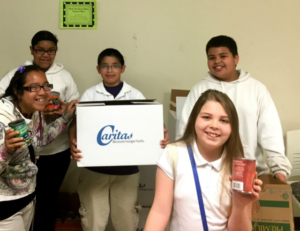 What does this look like for us? Volunteers from around our community come to our school to facilitate small groups based on the students’ preferred topics. The word “facilitate” is key. Although some instruction will be required, the main goal is to create an environment where students respect each other, their interests are piqued, and they are challenged to develop their own achievable service project. The groups develop their own proposal and our staff gives a stamp of approval or recommendation for changes.
What does this look like for us? Volunteers from around our community come to our school to facilitate small groups based on the students’ preferred topics. The word “facilitate” is key. Although some instruction will be required, the main goal is to create an environment where students respect each other, their interests are piqued, and they are challenged to develop their own achievable service project. The groups develop their own proposal and our staff gives a stamp of approval or recommendation for changes.
The foundation for a successful service learning group is strong relationships, and the ability to build and strengthen relationships is the number one qualifier for being a good group facilitator. According to the Search Institute, a research organization that focuses on what kids need to succeed, relationships are 10x more powerful than demographics as a determinant for success in life. On top of that, students are 21x more likely to be successful in making good decisions during stressful times if relationships are strong. Talk to any non-profit in town – if you want to make a difference in our town, relationships are the way. (The Search Institute has a 50-year legacy of linking research and practice to address critical issues in education and youth development; check them out at http://www.search-institute.org/ )
The Search Institute is quick to point out that relationships alone, aren’t enough, they must be paired with engagement. That’s why a natural second piece to our program is developing group dynamics, trust, and expectations to facilitate engagement. The time that is set aside each week for service learning at ISMS is short and precious. Team members follow the group norms to ensure success of their projects, and high expectations for meaningful engagement pull everything together.
 Service comes naturally to early adolescents, but incorporating the rigor of the classroom is as important as doing good. When it comes to curriculum for service learning, development is done as a team. The facilitators work with me and I work with teachers and instructional specialists to see how academic content can be reinforced. An easy example is the Girl Power group. This year they wrote letters to local businesses to encourage them to help support the Family Abuse Center. But these weren’t simply scrawled on construction paper, they were formal business letters that met proper form and syntax. What better way to learn English skills than to give it a purpose?
Service comes naturally to early adolescents, but incorporating the rigor of the classroom is as important as doing good. When it comes to curriculum for service learning, development is done as a team. The facilitators work with me and I work with teachers and instructional specialists to see how academic content can be reinforced. An easy example is the Girl Power group. This year they wrote letters to local businesses to encourage them to help support the Family Abuse Center. But these weren’t simply scrawled on construction paper, they were formal business letters that met proper form and syntax. What better way to learn English skills than to give it a purpose?
In May our students selected their favorite meta topics. Our incoming 7th graders showed the following interests:
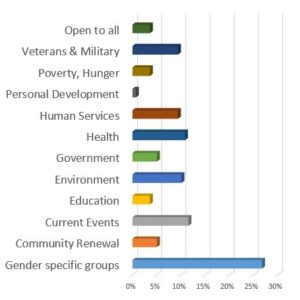
While our incoming 6th graders had their own preferences:

As you can see, there’s interest in a lot of different areas! No one topic took more than 27% of either age group and therefore we are now recruiting facilitators from a swath of different areas. What if you aren’t a pro in one of these topics? Great! Neither are the kids; it’s OK to be learning about topics together. Volunteers commit to come once a week for about one hour and spend an additional 30 minutes planning for the week. Facilitators must commit to volunteer for at least one full semester, but preferably a full school year (because relationships take time). To help, all facilitators will get training on the basics of service learning and working with our students. Once a month we’ll also have roundtable discussions to share feedback and evaluate.
Long-term, the goal of service learning at Indian Spring Middle School is to provide opportunities for students to apply new knowledge in our community and to foster a sense of empathy and civic duty. With your help, we hope this may be an opportunity that can become firmly rooted here and even spread to other schools.
For more information, contact me at [email protected], or give me a call at 217-553-6943.
Service Learning website: http://www.wacoisd.org/cms/One.aspx?portalId=13246&pageId=424889__
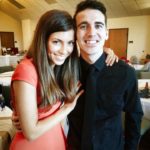 Travis Cheatham became the Service Learning Manager for Indian Spring Middle School in February. Before ISMS, Travis was the Executive Assistant at Mission Waco and helped lead a culinary class with the MPowerment job development program. Travis is also the Chef/Owner of Cuppa, Waco, TX a catering and food consulting business that was a regular at the farmers market in 2015. Travis is a ’06 Baylor grad who loves this community and loves to travel with his wife, Amy whenever possible.
Travis Cheatham became the Service Learning Manager for Indian Spring Middle School in February. Before ISMS, Travis was the Executive Assistant at Mission Waco and helped lead a culinary class with the MPowerment job development program. Travis is also the Chef/Owner of Cuppa, Waco, TX a catering and food consulting business that was a regular at the farmers market in 2015. Travis is a ’06 Baylor grad who loves this community and loves to travel with his wife, Amy whenever possible.
The Act Locally Waco blog publishes posts with a connection to these aspirations for Waco. If you are interested in writing for the Act Locally Waco Blog, please email [email protected] for more information.
By Craig Nash
From the moment their son Bennett was born and they discovered he had Cystic Fibrosis, my friends Breck and Brian have worked tirelessly to provide him with the tools necessary not just to survive, but to thrive with the chronic disease. Daily protocols of medication and time spent in “The Vest,” a contraption used to clear mucus from Bennett’s airways, take up much of their time and energy. In addition to this, hospital stays have become a part of life in their household. At the same time they are tending to his immediate needs, the Gamels have also taken on the cause of finding a cure for CF,– participating in fundraising walks (hundreds are part of Bennet’s Brigade,) educating the public on CF, advocating for research dollars, and working to ensure that “the system” works for Bennett and others with the disease.
Breck and Brian fight like hell today to keep the 6 year old Bennett alive, but also to ensure that the 60 year Bennett will be living life to the absolute fullness, and to bring the same quality and duration of life to others like him.
As I was recently in my truck on the way to speak to a group in Central Texas about food insecurity, I was reflecting on the work of Brian and Breck as it relates to alleviating hunger in our area. Like the administering of medication and daily chest treatments, there is the “on the ground” work of making sure people have the food they need for today, and there is the “in the air” work of fixing systems designed to alleviate hunger, so they can work better for our neighbors in the future.
In my short time working on the issue of childhood hunger in our area, I have discovered that Waco does the “on the ground” work well. Very well, in fact. We see a need and harness our resources to meet the need as quickly as possible. Non-profit organizations, schools and churches operate numerous food pantries in town to address immediate barriers that may be between people and the food they need. Pack of Hope helps fill in the nutritional “weekend gap” children face between school days, and rarely a day week goes by when I don’t see Good Samaritans handing out food to our homeless population. Meals & Wheels provides an invaluable service to seniors, and I have written in this space before, the Child Nutrition Departments at our local schools work tirelessly to feed our students year-round.
Waco fights like hell to feed people today.
But I wonder, could we be fighting harder “in the air” to fix the systems that contribute to people being hungry tomorrow? I think we can be.
In her blog documenting the fight against Bennett’s CF, Breck has given tips on what they have learned so far with regard to their battle. Tip #2 is “Become an Expert,” and part of becoming an expert, she writes, is asking lots of questions of medical providers. She writes, “we ask lots of questions until we feel satisfied we fully understand the reason behind the new treatment, test or medication. And then we often Google more information so we can better grasp how this fits into the overall care of Bennett’s disease.”
I think we should all be employing this tactic with our government officials who pass legislation regarding nutrition assistance programs, administrators and nutrition departments of our schools, and of others who are working at feeding our communities. Ask questions, lots of them.
Ask if a program is working.
When you get an answer, ask for the data.
Ask school administrators if they are making use of every resource at their disposal to ensure that when kids are under their care, they are being fed.
If they say “no,” ask “why not,” and “how can I help?”
If they say “yes,” ask to see the numbers. If they are providing meals that aren’t being accessed, ask if there are better ways to bring children to the meal or, better yet, bring the meal to the children.
It’s an election year—Don’t let a town hall meeting go by when you fail to ask a candidate what his or her plan is to address hunger. When they quickly try to pivot to their talking points, don’t let them.
We are a “churchy” place—Ask your pastor what he or she thinks the mission of your congregation is with regards to hunger.
Be gentle and empathetic. Be respectful of the expertise of the person you are asking the questions of, recognizing that they swim in these waters every day.
But be a little annoying.
I imagine those on the receiving end of Breck and Brian’s questions often get annoyed, but I know that Bennett’s life, both today and 60 years from now is worth it. And if we can alleviate hunger in our city, or even just put a big dent in it, I think annoying some people might also be worth it.
***
(To learn more about Bennett and CF– http://www.initforbennett.com/p/bennetts-story.html)
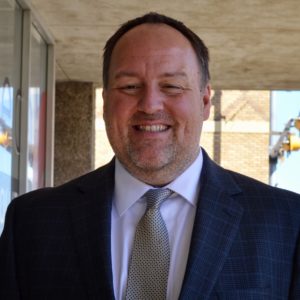 Craig Nash has lived in Waco since 2000. Since then he has worked at Baylor, been a seminary student, managed a hotel restaurant, been the “Barnes and Noble guy,” pastored a church and once again works for Baylor through the Texas Hunger Initiative. He lives with his dog Jane, religiously re-watches the same 4 series on Netflix over and over again, and considers himself an amateur country music historian.
Craig Nash has lived in Waco since 2000. Since then he has worked at Baylor, been a seminary student, managed a hotel restaurant, been the “Barnes and Noble guy,” pastored a church and once again works for Baylor through the Texas Hunger Initiative. He lives with his dog Jane, religiously re-watches the same 4 series on Netflix over and over again, and considers himself an amateur country music historian.
The Act Locally Waco blog publishes posts with a connection to these aspirations for Waco. If you are interested in writing for the Act Locally Waco Blog, please email [email protected] for more information.
By Diego Loredo
For this month’s blog, I decided to touch on something that seems to be a challenge for many students. Making a resume can be confusing and sometimes intimidating. You’re trying to showcase yourself to a future employer, and you have to make sure that your resume is both professional and shows everything that can help you land that job. I made a resume for a PR class last semester and here are a few things that I learned that could be helpful for others.
Your resume should have six main sections: Introduction, Objective, Education, Achievements/Honors, Skills/Talents, and Experience. At the top of your resume should be your contact information, such as your name, phone number, email address, and even your street address. These should be the biggest words you see on your resume. Make sure to keep the font to Arial or Calibri.
For your introduction, you should obviously introduce yourself. But, it is important to also add your major, your school, and what you plan on doing in the future. It also helps to include a sentence or two about any experience you have, but keep that part short since you will go into more detail about it later in the resume.
Your objective should be one to two sentences. It basically states what your goal is. For example, mine says “My goal is to apply what I have learned at UNT and Act Locally Waco into a sports PR career.” Keep it short and sweet.
Next, is your education. This is where you include what college you go to as well as what your major is. Make sure to include when you started attending, and, if you know it, add your anticipated graduation date. You can include your high school although it’s not a big deal if you don’t. Below your education, include your achievements/honors. This is where you show off to your employer. Include any scholarships, awards, or anything else that you think would look good on your resume.
Below that should be your skills/talents. This is the second most important section on your resume. Make sure to add skills that are relevant to the job for which you are applying. For me, since I am a PR major, I included skills like: Social media, Strategic Planning, Blogging, and Microsoft Office Word/Excel/PowerPoint. You should have at least five skills on your resume.
Finally, you add your experience. This is the most important section on your resume. This is where you add your work experience. Add any jobs that you have had, including internships. It is helpful to create a separate section where you add experience relevant to your career choice. I made a separate section called “PR Experience” where I included work that I have done during the school year for Minnie’s Food Pantry in Plano, TX. Make sure to add when you worked for each job and what you did. Include at least two bullet points of information for each job.
All of these tips that for making a resume, I learned last semester at UNT. Before that, I didn’t even know how to make a resume. You may find a better way to build your resume at your own school, if so then great. This is just to get you started. It’s always important to have a resume ready. You never know when you’ll need it!
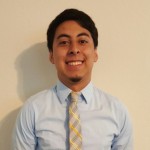 Diego Loredo is a sophomore at the University of North Texas. He is majoring in public relations. He graduated from University High School in 2014. Although he is still not quite sure what exactly he wants to do, he thinks he wants to work somewhere in sports PR (preferably soccer or college football). His hobbies include playing soccer and golf. He is 19 years old.
Diego Loredo is a sophomore at the University of North Texas. He is majoring in public relations. He graduated from University High School in 2014. Although he is still not quite sure what exactly he wants to do, he thinks he wants to work somewhere in sports PR (preferably soccer or college football). His hobbies include playing soccer and golf. He is 19 years old.
The Act Locally Waco blog publishes posts with a connection to these Aspirations for Waco. If you are interested in writing for the Act Locally Waco Blog, please email [email protected] for more information.
By Amanda Walker
Besides the title of “entrepreneur,” CEO, and programmer, Zach Krizan proudly bears the title of “nerd.” Since the age of 10, Zach could be found playing Pokémon, Yu-Gi-Oh!, or Magic: The Gathering at The Game Closet in Waco. It was in that card store that Zach found both a community and an identity as a nerd, and through Nrd Feed he is giving back to that same community.
Zach wanted to bring a little bit of that card shop to players everywhere. To do that he decided to create a website, Nrd Feed. It’s basically a social network for nerds. On the website, nerds can find prime information regarding their favorite “fandoms.” Fandoms are communities for fans of television shows, comic books, video games, etc – some of the most popular include Game of Thrones, Doctor Who, Sherlock, and Harry Potter. Within these fandoms, fans are given a platform to create their own unique culture and clique by sharing information, conversations, and memes (humorous images).
One thing that sets Nrd Feed apart from the competition is the way it generates content. In order to create the best content possible for consumers and fans, Zach wanted experts for each of the different fandoms instead of a few “generalists” writing about several different fandoms. Thus, the infamous “Guru Test” was invented. The Guru Test consists of 25 questions pulled randomly from a bank of 100 potential questions. Would-be fandom experts have 5 minutes to answer all 25 questions and prove their expertise. With a 95% fail rate, The Guru Test separates the true fans from the lightweights. As Zach puts it, he wants those who “live and breathe” their fandom. If a user passes the test with over 90 percent, they are then allowed to write articles and posts on the Nrd Feed website. Nrd Feed has over 40 writers/gurus, a fact that Zach is extremely proud of because it further separates his company from others who have a maximum of ten writers. Zach’s writers are passionate about their topics, actively searching for more information to get out to Nrd Feed followers.
Nrd Feed launched its website in 2014, thanks in large part to Waco’s Chamber of Commerce. In 2013 the Chamber of Commerce partnered with Baylor University to create ThincSpace, an incubator for creative startups. ThincSpace provides companies a place to meet and use as a home-base to allow the companies to grow. During this time, local entrepreneurs pay a very reasonable rent for space and access to professional support and networking.
And a good deal on office space is important, because Zach is an entrepreneur on a budget. “You have to budget like you’ve never budgeted before,” Zach remarks. It’s one of the toughest challenges of being an entrepreneur. Besides the crazy hours and the stress of starting a new company, Zach must also balance a part-time job outside of Nrd Feed in order to pay the bills. Before starting Nrd Feed, Zach quit his previous salaried job as a database administrator in order to work on Nrd Feed full-time. Once Nrd Feed was firmly established, Zach went back to work in order to maintain the funding for his business.
At around 6:30 p.m. Nrd Feed workers start coming into ThincSpace to start their work “day.” All workers come armed with a personal computer and one or two sugary drinks to fight exhaustion. Zach pays his gurus from his own pocket, he is not yet able to pay his seven employees. These students, interns, and nerds with time to spare, all work for free to help Zach achieve his dream. Part of the reason why Zach’s employees are not paid is because the website does not have advertisements. Instead of ads, Zach wants to gain revenue in a way that is worthwhile to his users. One of his business plans is to establish a system on the website that enables users to buy and sell high-quality, fandom-specific items that fans can collect. Not only would Nrd Feed earn revenue, but nerds would also have access to desirable merchandise.
Robert Toups, the Nrd Feed Chief Operating Officer, sometimes comes into the office with only five hours of sleep after pulling a full shift at his job. Working with Zach is nothing new for Robert. Friends since childhood, the two have been both partners in business and partners in prank. Unlike others, who were skeptical about Zach’s Nrd Feed dream, when Zach approached Robert with the idea of creating the website, Robert was completely invested. With an entrepreneur for a father, Robert understood the challenge before them but was confident in his friend. “It sounded like opportunity.” From that point, the two childhood friends never looked back.
Our conversation is interrupted for a moment as Zach greets one of his writers coming in for the night. The writer’s name is James. James has Asperger’s. Yet, as everyone at Nrd Feed brags, he is one of the best and most detail-oriented writers. Here, he is just like everyone else, if not more capable to handle fandom information. Zach not only wants his company to be different from the competition in terms of content, but because of its heart. “That’s one of the things with Nrd Feed. We want to be accepting of everybody. [James] is actually not the only writer with Asperger’s either. Nerds have always had a problem with being pushed away or judged, so we’re trying to be as open as we can.”
Being a self-proclaimed nerd is a point of pride for Zach, and through his website he wants others to feel confident with this label. To him, everyone is a nerd. “Being a nerd is just being open-minded and being passionate about something. There’s nothing wrong with liking something and being publicly open about liking it. You want to be a nerd because those are the best types of people.”
 The entrepreneur…Zach Krizan is former professional card player and full-time entrepreneur. He lives and breathes everything nerdy. Using his experience in the nerd world and his background in software engineering Zach is the founder and developer of NrdFeed.com.
The entrepreneur…Zach Krizan is former professional card player and full-time entrepreneur. He lives and breathes everything nerdy. Using his experience in the nerd world and his background in software engineering Zach is the founder and developer of NrdFeed.com.
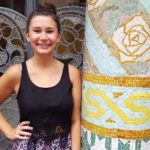 The writer…Amanda Walker graduated from Baylor University with a Professional Writing degree. In her spare time, Amanda enjoys reading romance novels and binge-watching political comedies.
The writer…Amanda Walker graduated from Baylor University with a Professional Writing degree. In her spare time, Amanda enjoys reading romance novels and binge-watching political comedies.
The Act Locally Waco blog publishes posts with a connection to these aspirations for Waco. If you are interested in writing for the Act Locally Waco Blog, please email [email protected] for more information.
by Jasmine Wise
Last Thursday I was invited to a Pilates class at the Baylor Stadium by one of my dear friends in Waco. Neither she nor I had any idea what to expect. Even as we pulled up I questioned her on things like, shoes or no shoes; does it cost or not; where exactly is the class? She knew none of those answers. The whole thing was a surprise to us both. We walked up the hill toward the Robert Griffin III statue and saw people preparing themselves for the class by placing mats on the ground and directing their children about what to do while they were working out. The instructor was introducing himself.
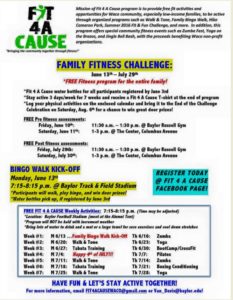 At first, I was so excited for this free exercise class and to stretch out my body that I didn’t notice much about the other people stretching out around me. I soon realized something was different about this class. This was not an ordinary free workout for those associated with Baylor. This was a Waco community workout. The workout students were a diverse group of people. I do not mean in exercise level. (But there were some people doing level three the entire time, and it wasn’t me). I mean in class, race, and gender. I saw people from all ends of the spectrum. I do not want to speculate what those people did for a living nor their education level, but let’s say we represented Waco. You had my friend and I both childless African American Baylor graduates and the middle-aged Hispanic women next to me with her three children.
At first, I was so excited for this free exercise class and to stretch out my body that I didn’t notice much about the other people stretching out around me. I soon realized something was different about this class. This was not an ordinary free workout for those associated with Baylor. This was a Waco community workout. The workout students were a diverse group of people. I do not mean in exercise level. (But there were some people doing level three the entire time, and it wasn’t me). I mean in class, race, and gender. I saw people from all ends of the spectrum. I do not want to speculate what those people did for a living nor their education level, but let’s say we represented Waco. You had my friend and I both childless African American Baylor graduates and the middle-aged Hispanic women next to me with her three children.
I took particular interest in two women. The first was a middle-aged white woman with two middle school-aged children. Honestly, the reason I took interest was negative. Both of the children were right in front of my friend and their mats kept blowing towards her. I was confused as to why neither the woman nor her kids tried to stop them. The mat blowing towards my friend thing happened a few times. I must admit, at first I was frustrated. I take exercise seriously! This seemingly unnecessary distraction was messing with my workout!
God quickly quieted my spirit and reminded me that this is the Church. This is what the community I say I want to be a part of looks like. There are Hispanics mothers, black men, Baylor students and graduates, all sharing the same space. I quickly got over my frustration, changed my attitude, and continued exercising.
The second women I took interest in was a black woman in her late 50s or early 60s. She sat elevated in the back of class. She was not on the ground for apparent health reasons and could not complete all of the exercises. Her determination to move and get healthy inspired me. She never quit moving, and I saw focus on her face as she completed each exercise. She gave me some new perspective on health. She showed me that every little bit helps. My only regret from this day is not talking to her. I should have asked her about her life, what brought her out on that day, what her family is like? I let this moment pass by.
When you are a part of something great you do not always realize until you take a step back.
I reflected on the experience the next day. I gained more appreciation for the town I live in. I loved Waco before. I love it a little bit more each time I interact with its people. This day was no different. This one event showered me with lessons. I realized how important it is to model healthy behaviors for the next generation as mothers exercised in front of and with their children. I saw diverse groups coming together with a common goal and nothing negative happened…something that felt like a contrast to what is happening in our country right now. I saw how important it is to take opportunities for conversation when they arise. These conversations create bridges across lines that usually divide us. This community workout is ripe with men and women from different backgrounds. Imagine what I could have gained from talking to that older lady for five minutes.
 By day, Jasmine Wise is a graduate student in the department of Sociology at Baylor University working on her Ph.D in Applied Sociology. By night, she is a youth leader at Acts Church in Waco, TX. By weekend, she develops her passions for public speaking, growing churches, developing communities. She wrote her first book, “Confessions of a Sinner”, in the Summer 2015. If you want to get in contact with Jasmine, please visit her website: drjkaw.com.
By day, Jasmine Wise is a graduate student in the department of Sociology at Baylor University working on her Ph.D in Applied Sociology. By night, she is a youth leader at Acts Church in Waco, TX. By weekend, she develops her passions for public speaking, growing churches, developing communities. She wrote her first book, “Confessions of a Sinner”, in the Summer 2015. If you want to get in contact with Jasmine, please visit her website: drjkaw.com.
The Act Locally Waco blog publishes posts with a connection to these aspirations for Waco. If you are interested in writing for the Act Locally Waco Blog, please email [email protected] for more information.
By Dr. Peaches Henry
We are broken-hearted about the attacks on the Dallas Police and DART Officers. We are broken-hearted about the deaths at the hands of police of Alton Sterling and Philando Castile. As John Donne wrote, the death of any man diminishes us all.
The Waco NAACP has a good relationship with the Waco Police Department. The relationship between the Waco NAACP and the Waco Police Department did not begin with the latest tragedies in our country. Rather, it started over a year ago with retiring Chief Brent Stroman. Well before the violence of last week, Acting Chief Gentsch reached out to the Waco NAACP to continue that relationship. I want to publicly thank retiring Chief Stroman and Acting Chief Gentsch for their commitment. I am proud that the Waco NAACP and the Waco Police Department have partnered to be proactive rather than reactive.
The Waco NAACP supports law enforcement. And though I do not presume to speak for all African Americans, I am confident in stating that the African-American community supports all law enforcement officers who are working to protect and serve all communities. Neither the Waco NAACP nor the Black Lives Matter Movement is demonizing the police. We know that the majority of law enforcement officers are committed to protecting all members of the community. We do not teach our children to hate the police. Yet, it is possible to simultaneously support law enforcement and criticize them. We cannot continue to pretend that law enforcement officers are blameless when they use unwarranted lethal force against African Americans.
Just as we cannot paint all police officers with a broad brush for the actions of a few, we cannot do that to the Black Lives Matter Movement. Thus, even as I support law enforcement, I want to stand with the Black Lives Matter Movement. We cannot allow these young people to be vilified because of the actions of agitators who are not affiliated with the movement. Nor should the acts of an apparently mentally-ill veteran be used to silence these young activists. When they marched to criticize a flawed criminal justice system and bad actors, these young people were exercising their constitutional rights. By disrupting society and inconveniencing us, they have forced a national conversation on much needed criminal justice reform. That is a good thing. Have their tactics been blameless? No. Have they sometimes used over-the-top rhetoric? Yes. Paraphrasing Martin Luther King, protests are the voice of the unheard. Rather than allow their voices to be shut down by making false links between their righteous cause to end unjust violence against African-American lives and the killing of innocent law enforcement officers in Dallas, we need to hear Black Lives Matter.
You ask why protestors do not flood the streets when so-called Black-on-Black violence occurs. Black-on-Black crime is a blight on society. So is White-on-White crime. I do not condone crime period. However, criminals, whether they are White or Black, are just that—criminals. Unlike criminals, law enforcement officers have been sworn to serve and protect the community and its citizens. They have been licensed to use deadly force to do so. Thus, when police officers break that sacred trust by unjustly directing that deadly force at African Americans, citizens are rightly outraged. Thus, instead of demonizing law enforcement or Black Lives Matter, there needs to be a conversation about criminal justice reform in this country.
In the videos that are confronting us on a devastatingly regular basis now, the larger American society is witnessing what African Americans have experienced for years. All America must acknowledge the truth that we see in many of these videos: African Americans face biased and racist treatment from some law enforcement officers that sometimes leads to their unwarranted deaths. No one is suggesting that law enforcement does not face extremely difficult and dangerous circumstances. We watched as they ran toward the shots last week. We have heard the stories of how they protected the very people who were protesting. However, the protestors were not criticizing those brave, committed public servants. They were condemning those officers who have broken trust with communities they serve and created a bad situation for good, decent officers like those. While the majority of law enforcement officers are committed to protecting all lives, just as those officers who ran to protect the lives of the protestors in Dallas did, African Americans do not know which officer they will face in a “routine” traffic stop—the public servant or the menace to society.
It must be noted that Philando Castile had been stopped 52 times since 2002. Was Castile an especially bad driver? Or was he targeted by officers who single out African-American motorists for such stops? It is these uncertainties that force African-American parents to have “the talk” with our children—a talk to help them survive an encounter with the police. Yesterday I was saddened to learn from Ramona Curtis, director for Community Engagement and Initiatives at Baylor, that she had been forced to have the talk with her young grandson. Her words show the heart-breaking reality that I and other African-American parents have to confront:
“Well, we had the talk! Today at Ross I promised my grandson a toy. He saw a beautiful water gun. Yes, Tamir Rice popped into my head. I know the gun is green, red, and yellow. I want to believe that nobody would mistake it for a real gun. But this is my grandson! I am not about to be a potential contributor to him being a hashtag! Do I take this chance? Hurry, find another toy that would knock his socks off. Grammy does not want to disappoint, nor does she want to have the “you are a Black man” talk that she had over and over with his dad growing up. My heart dropped as I recalled young Tamir Rice. Oh Jesus, he is eight! Not today! I don’t want to have the talk today! So I explained to him that sometimes people mistake toy guns as real ones. I could not stop there. My grandson is wise beyond his years, he asked me what color was Mr. Rice’s gun. He said to me that no one would mistake a green, red, and yellow gun for a real one. Maybe. Just the same, I had the “Black man in America” talk with him.”
It is hard to have “the talk.” However, it is even harder and more frustrating to see so few officers facing consequences for unwarranted violent acts against African-Americans. Tamir Rice was a child with a toy gun who was killed by police within seconds of arriving; officers faced no charges. Freddy Gray did not break his own neck in the back of that police van, yet no officer so far has been held accountable. John Crawford was strolling around Walmart with a BB gun; police shot and killed him instantly. Again, no charges resulted for law enforcement. Michael Brown, an unarmed jay-walking teenager who was not a suspect at the time, was shot and left to lie in the street for four hours—no indictment. Officers using deadly force when it is not warranted must be punished.
The NAACP and Black Lives Matter demand criminal justice reform. First, there must be a willingness of law enforcement to admit that there are bad officers among them and to punish them to the extent of the law. Second, law enforcement must shift from militaristic policing of African-American neighborhoods to community policing where officers development relationship with citizens so that they begin to see African Americans as citizens not as criminals. Acting Chief Gentsch served as an officer in East Waco for years, and consequently, knows many citizens in that neighborhood. Third, local communities need to have civilian review boards with subpoena power to provide needed oversight of police misbehavior. Fourth, local jurisdictions must acquire body cameras to provide additional insight into encounters between officers and citizens. Fifth, Congress needs to pass a federal anti-profiling law that includes data collection so that bias can be determined or dismissed in local jurisdictions.
If we want this cycle of violence to stop, together we must acknowledge the truth and take action on criminal justice reform.
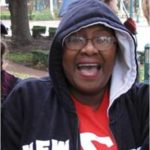 Dr. Peaches Henry is a graduate of the University of Texas. She received both her master’s and doctorate in English from Columbia University in New York. She is an English Professor at McLennan County Community College. She is the current president of the Waco McLennan County branch of the NAACP.
Dr. Peaches Henry is a graduate of the University of Texas. She received both her master’s and doctorate in English from Columbia University in New York. She is an English Professor at McLennan County Community College. She is the current president of the Waco McLennan County branch of the NAACP.
The Act Locally Waco blog publishes posts with a connection to these aspirations for Waco. If you are interested in writing for the Act Locally Waco Blog, please email [email protected] for more
By Robert Callahan
I don’t talk seriously about race much because our culture is burned out on it. Somehow we’ve departed from “I have a dream” to “I don’t wanna’ hear it”. So I’m judicious in my discussions of race. I use it sparingly so that when I do, it will count. Now I feel compelled to.
I grew up in a time & place where it was not socially acceptable to be black. If you wanted to see a movie with a black actor, you drove 45 minutes away to the St. Vincent Mall b/c that was the “Black” mall. Pierre Bossier Mall was the “White” mall & only played “white” movies.
Teachers spoke down to me. Students used the N word in front of other students & teachers with impunity. One sweltering Louisiana summer day, I waited outside a friend’s house, drinking from a hose while all my other friends took turns using the bathroom and getting water inside because my friend’s daddy didn’t want N*****s sitting on his toilet. When I was about eight, I recall running out of a restaurant screaming I didn’t want to be Black because my little heart couldn’t take it anymore. It was hell.
Regardless, I was a military brat, so as we moved I learned to adapt. Evolve. Adjust. Blend in. By the time I went to college in the North, I thought racism wouldn’t follow me.
I discovered I was wrong every time I drove through Idaho. One night, Rick Steadman, and others were with me as we left a carnival and I was “asked” to step out of a car by four officers at gun point because I fit the vague description of an escaped convict: black. No lie. I thought I was going to die that night. We all drove home silent. In tears.
Now I am married to a beautiful, white woman. We have beautiful children. When we married, I had to turn my back on my family that didn’t support our interracial marriage because I clung to the hem of my belief in God’s sovereignty more than the opinions of man.
We teach our children the values of truth, righteousness, and justice in a fallen world. One day we will teach them not to frequent certain places at certain times of night. Likewise, we’ll teach them how to interact with law enforcement officers during a traffic stop. That’s our reality.
Even still, what happened in our nation this week was a travesty. We began with a glimmer of hope that we could begin talking about race intelligently. That hope was lost when anger and ignorance took down our protectors.
Anger. Fear. Division. We scoffed in the ’90’s when black artists & leaders warned that the portrayal of African-Americans as “thugs” or “silly” in entertainment media was dangerous. Yet, the Bible tells us that faith comes by hearing. The seeds of division have been planted and matured to fruition. Now we are reaping a harvest grown from the casual glorification of thug culture and the honest fear of onlookers who think that’s really who we are.
Now, it seems that we’re all separated across a racial chasm as deep as our nation’s sordid history on race relations. Reading the Facebook posts of so many, It would seem as though I have to pick a side: “Are you for Police Officers or Black People?” It’s that simple. Just like that, racism is En Vogue again.
The pendulum has swung back to the place where those ignorant brats I grew up with have become community leaders, and have an excuse to openly use the N word with impunity again. I’m afraid of where we are as a nation.
There is a conversation to be had here. One that requires honesty and vulnerability. It means shutting up and TRYING to hear what the other person is trying to say. People are hurting. LISTEN!
We don’t have to be exclusively, blindly, pro-law enforcement or pro-minority to regain our conscience, our moral compass, or our identity as a nation. I refuse to participate in this debate between whose life does and doesn’t matter which is fueled by our outrage, ignorance, biases, and prejudices.
Treat people the way you want to be treated. If you call yourself a Christian, read your Bible. See what God has to say about the poor, the widow, the orphan, and the oppressed. Ask how what’s actually coming out of the politician’s mouth squares with what the Bible says about those topics. Don’t rush to judgment until you have all the facts. These are the basics. No one should have to remind us of these fundamental lessons in humanity. Even still, lest we forget:
“We hold these truths to be self-evident, that all men are created equal, that they are endowed by their Creator with certain unalienable Rights, that among these are Life, Liberty and the pursuit of Happiness…”
 Robert Callahan is a name partner in the firm of Callahan & King, based in Waco, Texas. He is a graduate of Baylor Law School, who previously served in the McLennan County District Attorney’s Office under John Segrest. As a prosecutor, Robert was an advocate for women and children. In 2016, he was inducted into the National Black Lawyers Top 100 membership. Robert and his wife, Mollie, have been married more than ten years and have three children. They are actively involved in Antioch Community Church where Robert provides voluntary legal support and training for Unbound, a ministry that supports victims of Human Trafficking.
Robert Callahan is a name partner in the firm of Callahan & King, based in Waco, Texas. He is a graduate of Baylor Law School, who previously served in the McLennan County District Attorney’s Office under John Segrest. As a prosecutor, Robert was an advocate for women and children. In 2016, he was inducted into the National Black Lawyers Top 100 membership. Robert and his wife, Mollie, have been married more than ten years and have three children. They are actively involved in Antioch Community Church where Robert provides voluntary legal support and training for Unbound, a ministry that supports victims of Human Trafficking.
The Act Locally Waco blog publishes posts with a connection to these aspirations for Waco. If you are interested in writing for the Act Locally Waco Blog, please email [email protected] for more
By Jenuine Poetess
In 2015 Central Texas Artist Collective (CTAC) brought the community together with an exhibit centered around Birds imagery and themes. Over 45 artists across diverse mediums entered, some for the first time ever. This year, CTAC is once again bringing a fresh, dynamic, and collaborative art exhibit to Waco. Ekphrasis! is a creative adventure pairing visual artists and writers together—selected at random to collaborate—creating art and poetry to be displayed in shop windows along Austin Avenue in Downtown Waco.
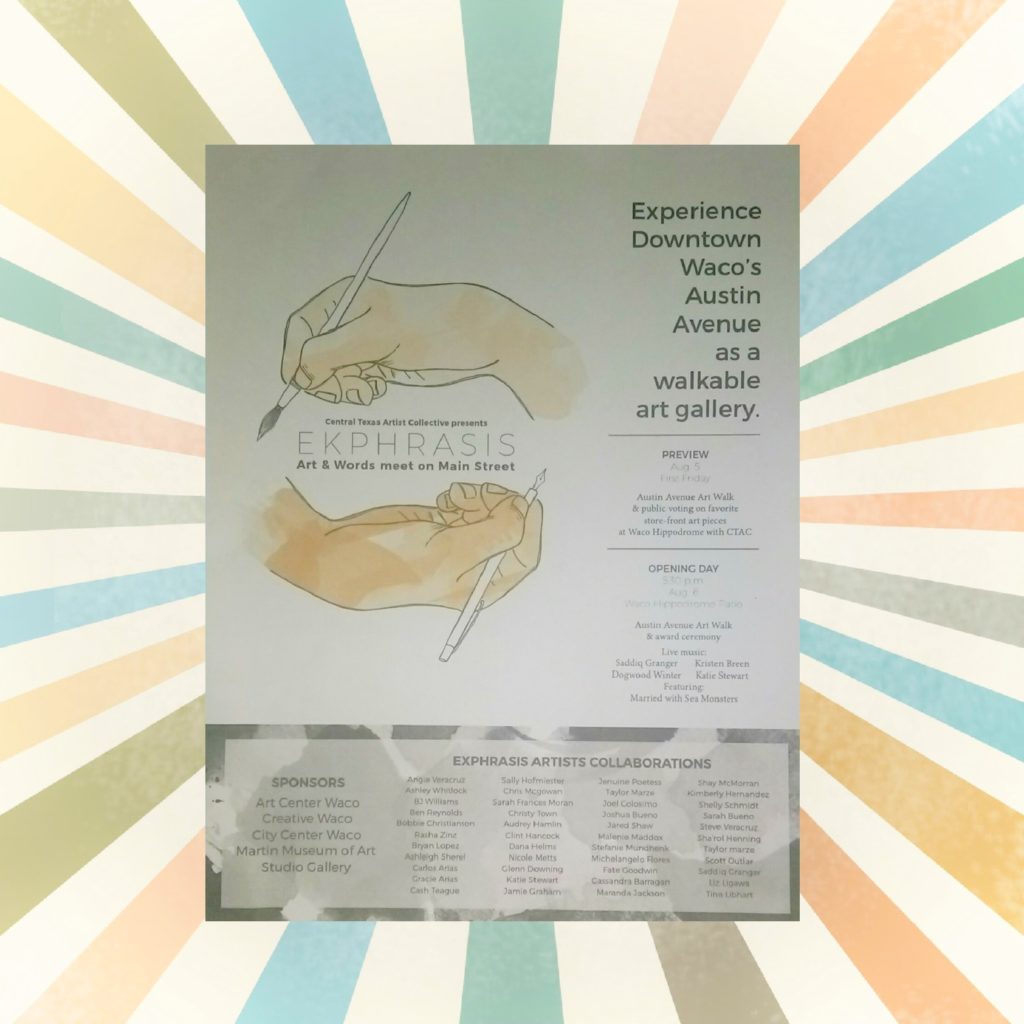 Not only are over 50 artists and writers involved in this thrilling project, but over 15 businesses will host artwork and their accompanying poems for the first two weeks of August. On First Friday, community will have a chance to tour the exhibit and place their votes for Best in Show; Most Inspiring; and Waco/Downtown Spirit awards. On Saturday August 6th, there will be a reading of all the Ekphrasis poems, live music, a tour of the exhibit, and an awards ceremony.
Not only are over 50 artists and writers involved in this thrilling project, but over 15 businesses will host artwork and their accompanying poems for the first two weeks of August. On First Friday, community will have a chance to tour the exhibit and place their votes for Best in Show; Most Inspiring; and Waco/Downtown Spirit awards. On Saturday August 6th, there will be a reading of all the Ekphrasis poems, live music, a tour of the exhibit, and an awards ceremony.
As far as we know, this kind of endeavor has never been attempted in the history of Waco—bringing so many facets of our city together for the purpose of art, expression, and building community!
I recently had an opportunity to have a virtual dialogue with three of the participants, poet Nicole Metts of Central Texas; fiber artist, Dana Helms of Oklahoma; and poet/spoken-word artist, Audrey Hamlin of Central Texas. They shared with me a bit about how they came to be involved with this exhibit and their experience being paired with another creator and working as a team to submit their work.
Jenuine Poetess: What inspired you to join this creative adventure?
Nicole Metts: I was inspired by your art/writing combination because I love them both. I have used this technique to give my work much more depth at school.
Dana Helms: I have my great grandmother, Gongie (gone-ghee), to thank for my love of the tactile art in my life. She introduced me to so many artistic abilities when I was young; crochet, painting porcelain, gold leaf, and much much more. She would get frustrated I’m sure but would never let that stop her from teaching me.
Audrey Hamlin: I wanted to expand my horizons as a poet, and Ekphrasis seemed like the perfect way to do it. I find that when I write alone, my writing is inevitably limited to my personal experiences, surroundings, and perceptions.
JP: What are some initial thoughts you had about the process–of a collaborative exhibit, of being randomly partnered with another artist/writer, of creating new work with a new person?
NM: I was the lucky one! My poem came first and Dana Helms (my artist partner) has been showing me her work on a beautiful tapestry as it is coming together. I feel truly blessed to have such an amazing artist turn my poem into a visual piece.
DH: I was a performer at an event in Waco a while back and met some of the nicest artists. They were inviting and interesting. At the time, my husband and I were thinking of moving to Waco. They extended an invitation to me and the whole concept of Ekphrasis was too interesting to pass up.
AH: Honestly, I was initially intimidated by the process of the exhibit. I struggle to consider myself someone worthy of collaborating with, so it was a strange concept to sign up to work with an actual artist when I didn’t consider myself one. However, I decided it would be an act of self-love and courage to do so.
JP: Will you share a bit about your process so far – meeting/connecting with your partner, coming up with an idea, how you conceptualized your respective pieces, etc…?
NM: Besides Dana talking with me about her progress on the tapestry, we have also been coming up with a flyer to define Ekphrasis together. It has been a truly joyful and inspiring experience.

Figure 1Detail of Dana Helms Ekphrasis fiber art
DH: My process so far has been totally amazing! I agreed to be part of the show and was paired with Nicole Metts. Next I received her poem and was immediately inundated with ideas in both the Fiber and animation world. Nicole shared some of her likes (i.e. Colors, and steampunk) and I went from there with emailing a sketch then an in progress image. She has been very encouraging and supportive. I am hoping to collaborate more with her on an animation film short to submit to film festivals and multi-media shows in museums.
AH: Christy Town and I met at Tea2Go (as all Waco artists do) a couple weeks ago. We started by discussing our respective work. Christy told me that she was an abstract artist, which excited me because I have always been moved more by abstract art. After seeing some examples of her art and talking about my poetry, we started talking about reoccurring images in my poetry (phoenixes, stained glass windows). From there, we decided that we would continue with the themes of some of my past poetry about interpersonal violence and play with the images of phoenixes and stained glass as images of renewal. Since then, we have been playing with various ideas in both art and poetry. I have developed a near-final draft of the poem that steals some lines and concepts from old poetry, while also exploring some new ideas from Christy’s inspiration. I am currently in the process of playing with some formatting. As I am accustomed to sharing my poetry typically through spoken word, I am excited to find a way to present this piece visually rather than orally.
JP: How has this project challenged you—pushed you beyond the bounds of your routine creative process?
NM: The flyer has been a challenge. It was difficult to come up with a truly unique perspective; but I love a challenge and am thankful for the experience.
DH: I am usually a face to face kind of person. I like to get a sense of who the writer is and where they come from. So this has completely thrown me outside of my comfort zone. Which is a very good thing for anyone to do frequently! I feel very mentally expanded right now. It’s very riveting!!!
AH: This project has challenged me by allowing me for the first time to acknowledge myself in a significant way as a writer and poet. It has also challenged me in the way that collaboration always does: it is an adventure to see something as dear to me as my writing through the eyes of another artist who I respect.
JP: How has/is this project shaped/shaping you as an artist/writer?
NM: This project has helped me grow and build skills as a writer and has also introduced me to some amazing inspiring people.
JP: What value does this kind of project /exhibit have for artists & for our city?
NM: Waco and the arts community should be truly proud of this project. This partnership between artist and writer will bring its audience a truly unique and memorable experience.
DH: Putting writers and visual artists together will allow for a more inclusive community. To open a dialogue between word smiths and visuals is to grow a collaborative that will do the unimaginable. I would have never thought of this piece or the animation without reading Nicole’s work
AH: I think this exhibit will open the eyes of locals and visitors to the amazing community of artists in the Waco area. Waco is, like any city, often defined by a handful of people and events that don’t capture the entirety of its diversity. I think it is so easy for all of us to see Waco and think of Baylor or Fixer Upper, both of which just scratch the very surface of what Waco is. Waco is a sum of all of its parts, and that includes the artistic expression that it inspires.
JP: What would you like Waco to know about this exhibit and /or arts & community in general?
NM: This type of project truly brings people together with a common bond to bring culture to Waco and is an ingenuous event that should not be missed.
AH: I would like Waco to recognize the beauty that comes from a group of people coming together to bring their respective talents together to make art. In a world full of so much hate and violence, I think collaborations like this, artistic or not, are exactly what community is about. I hope that this exhibit inspires the people of Waco to collaborate with one another. Something truly magical happens when diverse groups of people get together and share their stories, their talents, and their unique perspectives. This exhibit is just one manifestation of that.
JP: Would you do something like this again?
NM: I would absolutely do something like this again and I have enjoyed every moment of it! I also hope Dana Helm and I will be doing other projects together in the future.
DH: I would definitely love to do something like this again!! I’m IN!!! I am bringing some of my husband’s colleagues with me to the show. They can’t stop talking about it with him at work. It’s a great idea!!
AH: Absolutely!
Get Involved:
- First Friday :: August 5, 2016 :: Stroll along Austin Avenue and cast your votes for :
o BEST IN SHOW
o MOST INSPIRING
o WACO/DOWNTOWN SPIRIT
- Ekphrasis Reception & Awards Ceremony :: Saturday August 6, 2016 :: 5:30pm @ Hippodrome outdoor patio :: Live Music, Ekphrastic reading; Awards; and more!
- Waco Poets Society Open Mic :: Thursday July 21 6-8pm at Tea2Go Waco-Baylor featuring singer/songwriter Braden Guess
- Creative Waco Summer Camp Listing
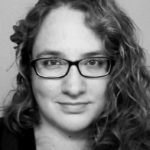 Jenuine Poetess is an artist, visionary, and community organizer. In 2010, she founded In the Words of Womyn (ITWOW), an international, grass-roots, written and spoken-word arts project with chapters throughout Los Angeles, CA; Waco, TX; and Lebanon. Jenuine is the founder of Waco Poets Society and co-founder of the Central Texas Artist Collective. She writes, organizes, and creates rooted in the fierce conviction that holding intentional space, access, and opportunity for all people to foster their creative health is a matter of justice and is a vital asset to the sustainable thriving of communities. She currently lives and poems in Central Texas where she enjoys finding new ways to disrupt the homeostasis of her city. You can contact her at: j[email protected].
Jenuine Poetess is an artist, visionary, and community organizer. In 2010, she founded In the Words of Womyn (ITWOW), an international, grass-roots, written and spoken-word arts project with chapters throughout Los Angeles, CA; Waco, TX; and Lebanon. Jenuine is the founder of Waco Poets Society and co-founder of the Central Texas Artist Collective. She writes, organizes, and creates rooted in the fierce conviction that holding intentional space, access, and opportunity for all people to foster their creative health is a matter of justice and is a vital asset to the sustainable thriving of communities. She currently lives and poems in Central Texas where she enjoys finding new ways to disrupt the homeostasis of her city. You can contact her at: j[email protected].
The Act Locally Waco blog publishes posts with a connection to these aspirations for Waco. If you are interested in writing for the Act Locally Waco Blog, please email [email protected] for more information.
